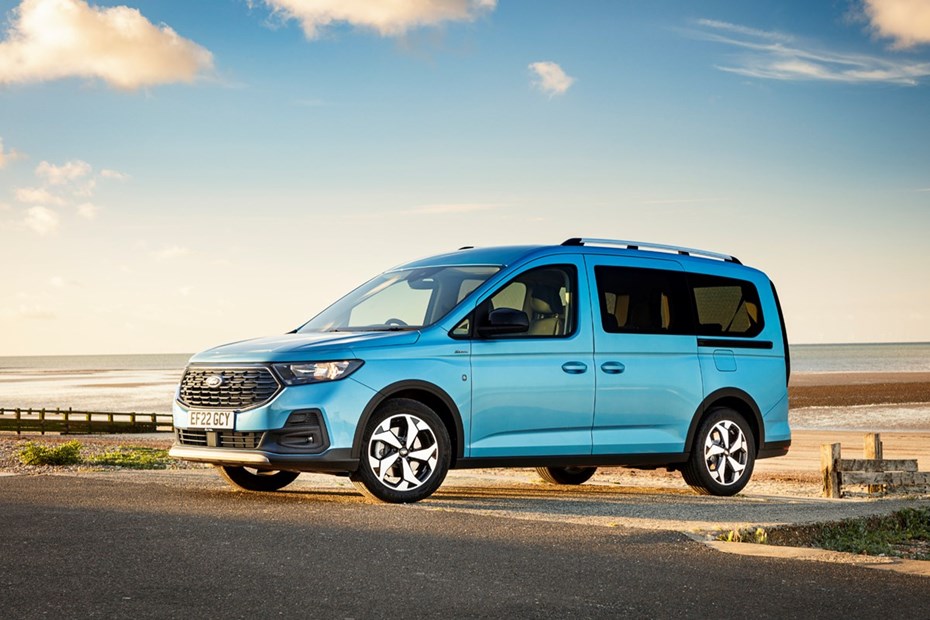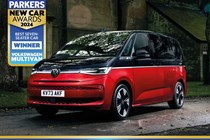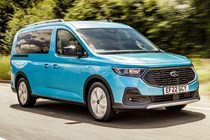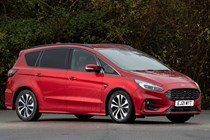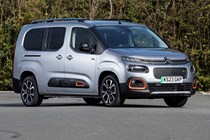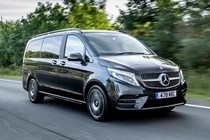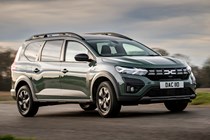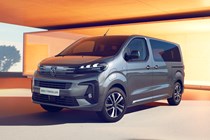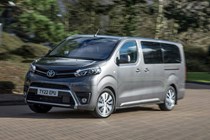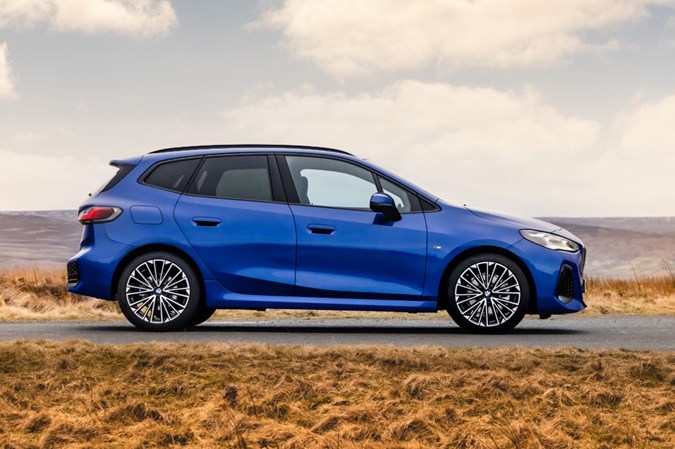MPVs or people carriers aren’t as popular now as they were in the early 2000s. These days, drivers tend to favour SUVs as family cars for their slightly less dorky appearance. Plus, there are now plenty of options out there that offer enough space inside for seven passengers, such as the SEAT Tarraco, Land Rover Discovery and Tesla Model X, which has somewhat sullied the MPV’s main selling point.
Despite this change in buying trends, we still think there’s some life left in the people carrier class. The MPVs on sale today are incredibly versatile, offering flexible seating layouts, enormous amounts of storage space and surprisingly economical powertrains. Manufacturers have even learned how to make their MPVs appeal to fashion conscious buyers, by trimming them in tough-looking cladding lifted straight from the SUV style guide.
We’ve seen some fresh innovation in the class, too, which is encouraging to see in what we thought was yet another a niche pushed into the history books by the SUV craze. Manufacturers such as Dacia and BMW have adopted some truly innovative design approaches for their latest MPVs – and their boldness has produced some desirable and interesting cars.
Scroll down to read our round-up of the best MPVs on sale in the UK in 2024. The entries below include a brief description of each car’s merits but, if you want to learn more, we’ve also included links to our detailed reviews.
The Top 10 best MPVs on sale now
Volkswagen’s consummate family all-rounder, improved
The Multivan’s interior is very customisable. You can rotate the second row, for example, to allow four passengers to sit and face each other – and you can even have a folding table for the middle of the cabin. Plus, if you need even more space, you can specify the Multivan in a longer body style which liberates an extra 200 litres of luggage capacity behind the third row.
Read our Volkswagen Multivan review
Pros
- Better to drive than the old model
- Flexible seven-seat cabin
- PHEV option available
Cons
- Not small or cheap
- Thirsty petrol engines
Spacious and versatile, but it looks like a tradie's van
For your own comfort and sanity, we’d recommend opting for the Life model if your budget can stretch to it. The most basic model is a little spartan, but Life variants add some helpful tech such as front and rear parking sensors, keyless go, electrically adjustable door mirrors and a digital gauge cluster. We’d also recommend you opt for the 122hp 2.0-litre diesel engine. It’s the most muscular engine in the range and feels far less strained when it’s laden down with stuff.
Read our Volkswagen Caddy review
Pros
- Incredibly practical
- Short and long wheelbase
- Car-like interior
Cons
- Frustrating infotainment
- Noisy interior at speed
A charming family bus – but the Caddy makes better sense
However, while the Tourneo Connect is certainly more versatile than the electric-only Peugeot e-Rifter and Vauxhall Combo-e, it’s a slightly less attractive proposition than the Caddy because it isn’t as customisable and it’s slightly more expensive. Plus, the Volkswagen’s warranty has a higher mileage limit of 100,000 miles, compared to 60,000-miles with the Ford. Still, if you want a good MPV and are loyal to Ford’s branding, it’s worth a look.
Read our Ford Tourneo Connect review
Pros
- Loads of space
- Efficient engines
- Good value
Cons
- Caddy is more flexible
- Fiddly infotainment
Now off-sale, but a great approved used choice
The S-Max also features the same 190hp petrol hybrid engine as the the Kuga SUV, which has enough grunt to mask car’s considerable bulk – even when it rammed to the gunnels with luggage. Its dynamic ability, seven-seat capacity and up to 2,200 litres of boot space make it a great choice for the petrolhead with a growing family.
Read our Ford S-Max review
Pros
- Good to drive
- Solid build quality
- Enormous cabin
Cons
- Rearmost seats are tight
- It won’t be around much longer
Immensely practical, but limited by its electric range
Battery capacity aside, there’s lots to like about the e-Berlingo. The standard model offers loads of space for passengers and luggage, and it has a very comfortable ride. However, if you need some extra practicality, you can opt for the long wheelbase XL model which has seating for seven or (if you tumble the third row forwards) an even bigger boot. And while the switch to electric power has jacked up the e-Berlingo’s price slightly, it’s still quite affordable for an EV.
Read our Citroen e-Berlingo review
Pros
- Gigantic boot
- Loads of passenger space
- Laid back driving experience
Cons
- Short electric range
- EV power pushed up price
Don’t call it an MPV – BMW’s sales reps don't like it
Yes, it only offers space for five passengers, but it’s exceptionally well-packaged, offering ample room for child seats and baby clobber or five adults. Its boot is also a generous size at 415 litres, while its upright styling and huge windows mean it a doddle to get into and see out of. Plus, because it shares its underpinnings with the BMW 1 Series, it’s great fun to drive. In fact, we reckon it’s the best driving MPV money can buy right now.
Read our BMW 2 Series Active Tourer review
Pros
- Good head and leg room
- PHEV is fast and frugal
- Best MPV to drive
Cons
- Noisy at motorway speeds
- We’re still looking for its good side
Luxury MPVs don’t come roomier than this
You have three powertrains to choose from. There are two 2.0-litre diesels with either 163hp or 237hp, while the zero-emission Mercedes EQV has a 204hp electric motor and a maximum range of 213 miles. A word to the wise – if you’re on the fence about buying a V-Class, now might be the time. Mercedes is about to launch an updated version of the MPV, which means you’ve got a better chance of getting a good deal on the outgoing model.
Read our Mercedes V-Class review
Pros
- Can carry eight in comfort
- Easy to drive despite its size
- Loads of modern tech
Cons
- Expensive to buy
- Interior looks dated
Affordable, no-nonsense family transport at its best
And it gets better. The Jogger might be 4.5 metres long but, because it’s basically a Clio underneath, it drives like a much smaller car. Its interior is clever, too. Dacia staggered the seating rows like a theatre, which it says helps to reduce motion sickness for those in the back because it gives everyone a clearer view out of the front. You can even have it with a self-charging hybrid powertrain that’ll return upwards of 50mpg.
Read our Dacia Jogger review
Pros
- Bargain price tag
- Seating for seven!
- Comfortable suspension
Cons
- No diesel option
- Seats aren’t very flexible
Electric eight-seater delivers smoothness in spades
Worryingly, it’s the same 50kWh battery pack and 136hp electric motor you’ll find in the much smaller Corsa Electric. Peugeot says the van has a maximum range of 143 miles, but we’ve seen that figure drop as low as 100 miles when the temperatures plummet. That means it’s only really suitable for local journeys.
Read our Peugeot e-Traveller review
Pros
- Smooth, silent acceleration
- Comfortable ride quality
- Loads of interior space
Cons
- Battery range is poor
- You can’t have the van’s 75kWh battery
A familiar van-based MPV with a stunning 10-year warranty
Every other rebadged version of this MPV is now electric only – and, when Toyota launches the revised version of the Proace Verso later this year, there’s a strong chance it could go the same way. That would decimate its appeal for long-distance drivers, as it’ll probably have the same 100-odd mile range as its chassis siblings. However, it should still be offered with Toyota’s world-leading 10-year warrant, which might just be enough to compensate for the lack of range.
Pros
- Industry-leading warranty
- Convenient diesel power
- Seating for up to nine
Cons
- It’s about to be replaced
- Diesel power might not hang around
Where have all the MPVs gone?
MPVs were all the rage in the 1980s and 1990s. Growing families leapt out of their saloons in droves and flocked to boxy people carriers such as the Ford Galaxy, Renault Espace and Toyota Previa for the practicality and flexibility they offered.
The biggest draw of an MPV used to be its third seating row – but the market has changed as manufacturers have responded to the SUV onslaught. Starting in the late 1990s and early 2000s, car brands experimented with different sized MPVs to keep the niche relevant.
Within a few years, most mainstream brands offered a variety of people carriers ranging from bijou supermini-sized ones, all the way up to gargantuan seven- and eight-seaters. A few quirky trailblazers were spawned along the way, such as the six-seat Fiat Multipla and the dinky Ford B-Max with its sliding rear doors.
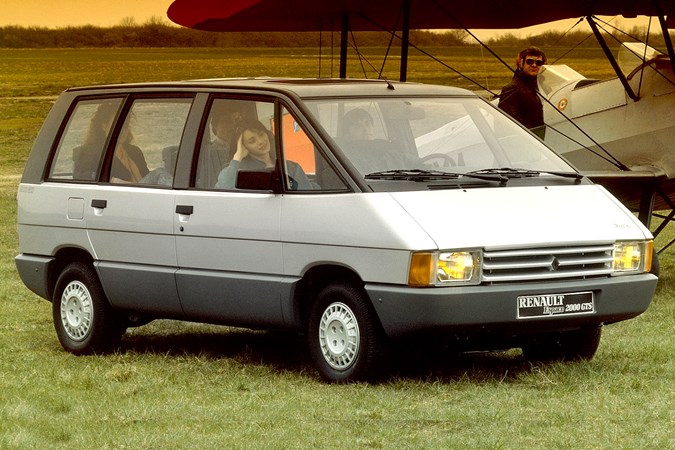
MPV or SUV?
Are you looking at a seven-seat Skoda Kodiaq and a Citroen Berlingo and trying to figure out the difference in functionality between the two cars? Here’s a tip – the MPV is the one that looks like a van. Good MPVs champion space above all else, and that boxy van-like silhouette is the most efficient way of packing passengers and luggage into a vehicle.
Manufacturers have realised this – so they’ve started basing their MPVs on their small and medium-sized panel vans. Along with the vast amounts of space, this brings benefits such as sliding rear doors, lots of headroom and slab sides, into which you can cut massive window holes to keep even the queasiest of car-sick children happy.
Flexible seating is also a must for an MPV. Most have seats that can slide back and forth, recline and even be removed, just in case you need to haul massive loads instead of people.
They’re wide, too. Have you ever tried fitting three Isofix child seats side by side in a regular hatchback or SUV? It’s impossible in the majority of cars, but most MPVs manage it easily.



